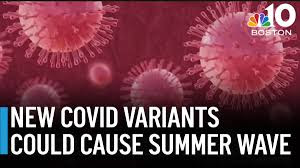A local
Star-Advertiser article caught my attention: Health officials indicated that the FLiRT variants, including KP.1.1, KP.2 and KP.3, are beginning to dominate. These variants are more immune-invasive, and another wave could be coming this summer.
Hospitalization rate in Hawaii
- Two weeks ago, 27 hospitalized from Covid-19.
- May 22: 55 patients.
Hawaii positivity rate:
- On May 1: 4.3%
- Last week: 8.5%
- This week: 10.5%
Definitely going up. But what is positivity? Simply, divide the number who tested positive divided by the number who took the test, multiplied by 100. How high is too high? Four years ago a
report from Johns Hopkins indicated:
The higher the percent positive is, the more concerning it is. As a rule of thumb, however, one threshold for the percent positive being “too high” is 5%. For example, the World Health Organization recommended in May that the percent positive remain below 5% for at least two weeks before governments consider reopening.
Further:
As of July 2020, some countries (for example, Australia, South Korea, and Uruguay) and U.S. states (for example, New York, Maine, and Connecticut) were well below the 5% threshold, with 1% of tests or fewer being positive—while other countries (for example, Mexico and Nigeria) and states (for example, Mississippi, Nevada, and Florida) had percent positive levels higher than 15%, far above this cutoff. (See Becker’s Hospital Review and the Johns Hopkins Testing Tracker.)
Remember that the Covid-9 became a pandemic in early March of 2020 and actually peaked in April, diminishing a bit in August. The real peak came in late 2020 and early 2021, then again in early 2022.
Here is a key graphic from the
New York Times:
During that January 2022 final major peak, the positivity rate was around 30%. Most of the other peaks showed positivity from 10% to 15%. Thus, a positivity rate higher than 10% should be a very serious concern today!
Should you now therefore cancel or delay a planned vacation to Hawaii? Well, the Hawaii Tourism Authority likes to point out that Honolulu was recently named the
safest city to visit in the world.
From top to bottom the 15 safest cities for World travelers in 2024 are:
- Honolulu
- Montreal
- Reykjavik
- Sydney
- Amsterdam
- Dubai
- Copenhagen
- London
- Seoul
- Venice
- Tokyo
- Berlin
- Paris
- Barcelona
- Orlando
Further:
Wildfires are a big concern in Hawaii, obviously, but the combination of the Hawaiian Islands’ geographic location and volcanic origins make them a target for all sorts of natural disasters, from typhoons and tsunamis to earthquakes and volcanic eruptions.
Also, Covid-19 was not one of the parameters of comparison. On the other hand, regarding health measures, Honolulu was also #1:
- Honolulu
- Sydney
- Dubai
- Montreal
- Berlin
- Amsterdam
- Reykjavik
- London
- Singapore
- Copenhagen
I tried to find the Covid-19 positivity of worldwide cities, but could only come up with concerns today by country. USA and China are high, and Europe is a basket case.
Here is
more info, but kind of confusing.
Wikipedia with more, but not up to date. My gut feeling is that Hawaii merely reflects what is happening around the world. So a new wave this summer? Well, June 1 is tomorrow, and the world might already be in a new wave. If serious, it will be some time before there is any kind of panic, because most countries stopped reporting a long time ago.
In short, get the latest booster. This will not prevent you from getting infected by Covid-19, but the symptoms should be mild, and with Paxlovid, all that much safer.
- The high is Vermont at 34%, Hawaii is at 23%, and southern states at the bottom, with Mississippi at 7%.
- The percentages of those 65 and older are 71% in Maine, 53% Hawaii and 23% Mississippi.
-
















Comments
Post a Comment